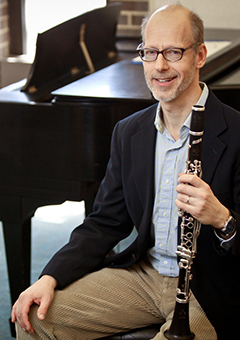The Rose 32 Etudes: The Metamorphosis
by Larry Maxey (professor emeritus of clarinet at the University of Kansas School of Music); reprinted with permission from the author
If it is possible to single out one collection of studies as representing a definitive compendium for the clarinet, that collection must assuredly be the Thirty-two Etudes by Cyrille Rose (1830-1903). This volume is undoubtedly the most widely-used in the entire etude repertoire and provides the foundation for the clarinet curriculum in countless music schools in this country.
Far from being a succession of mere challenges to the player's technique, these studies require the utmost in control, sensitivity and musicianship, and are sufficiently complex and sophisticated to warrant study at various stages of the performer's development.
Cyrille Rose, a native of northern France, was a pupil of the famed H.C. Klose, who served as professor at the Paris Conservatory from 1838 until 1868. Rose succeeded to the orchestra of the Paris Opera, where he was consulted by such composers as Gounod and Massenet concerning technical points of writing for the clarinet. He was known as a brilliant performer and excellent teacher and produced a number of fine players, among them Henri and Alexandre Selmer, H. Lefevre and Paul Jeanjean. Less well known than his other achievements are the experiments he made in conjunction with the clarinet manufacturer Buffet to establish the correct proportions of the bore of the instrument.
All of the Thirty-two Etudes for Clarinet except one are based on etudes from Op. 31 of F. Wilhelm Ferling composed in the mid-19th century. Although each of Rose's etudes is easily matched with its prototype, his modifications of the original studies are extensive and include virtually every aspect of compositional technique. Newly-composed sections ranging in length from four to forty measures occur in all except one of the etudes (Rose No. 11 - Ferling No. 27). Each Ferling study in its entirety is usually incorporated by Rose, but occasionally a segment is omitted.
Rose freely modifies the factors of rhythm, articulation, tempo, range, melody, dynamics, expression markings, meter, phrasing and key. Meter change is limited to alteration form simple duple to simple quadruple or vice versa, as well as changing the unit of the beat, as from 3/4 to 3/8.
Ferling's etudes consist of forty-eight studies in every major and minor key with one slow and one fast etude in each key. However, the tonalities of Ferling's studies are almost invariably transposed by Rose, and the intervals of these transpositions include the minor second, major second, augmented fourth, perfect fifth and octave. Through these transpositions Rose avoids using any minor keys beyond three accidentals and any major keys beyond five accidentals.
It is worth noting that in two of the etudes Rose incorporates excerpts from works for solo violin by Johann Sebastian Bach. In his Etude No. 16 (Ferling Study No. 20) Rose inserts a twelve-measure section between measures 8 and 9 of the Ferling study. The initial ten measures of this section constitute an almost literal repetition of measures 13-17 of the second movement of Bach's Partita I in B Minor for solo violin. The discrepancy in the number of measures cited can be attributed to the fact that the Rose etude is in duple meter, whereas the violin edition is in quadruple meter.
In his Etude No. 20 (Ferling Study No. 32) Rose inserts a thirty-measure section between measure 32 and 33 of the original study. The final eight measures of this section constitute an almost literal repetition of measures 1-8 of the fourth movement of the Sonata I in G Minor for solo violin by Bach.
It was apparently the purpose and intent of Cyrille Rose to evolve from the studies of Ferling a collection of etudes which would represent an expansion of the rich musical content of the original work, and at the same time encompass a highly idiomatic style for the clarinet. His success may be judged in light of the following quotations from two of our leading artist-teachers:
"The primary purposes of instrumental teaching are twofold: to develop in the student the ability to respond to the character of the music and to enable him to gain the necessary facility to effectively express his response through playing. In the past it has often been felt that sensitivity in a performer was an inherent quality which could not be instilled from without, but the entire philosophy of music education decries this outlook. In my mind the Rose etudes are the most comprehensive studies for the development of musicianship and sensitivity to music in the maturing clarinet student. They form a basic part of the clarinet curriculum at the Eastman School of Music." (Stanley Hasty, professor of clarinet at Eastman School of Music 1955-1985)
"I feel that the clarinet etudes of Cyrille Rose constitute a basic part of the clarinetist's training, and that repeated study of them never fails to be profitable. They are invaluable as a means of developing control and beauty of tone and in instilling a sense of phrasing and melodic line in the student. The musical value of the Rose etudes is beyond question, and I find them extremely well-suited to the clarinet in every respect. They are an essential part of the clarinetist's program of study at Michigan State University." (Keith Stein, professor of clarinet at Michigan State University 1937-1975)

Contact
Gregory Barrett
NIU School of Music
1425 W. Lincoln Highway
DeKalb, IL 60115
815-753-8004
gregbarrett@niu.edu